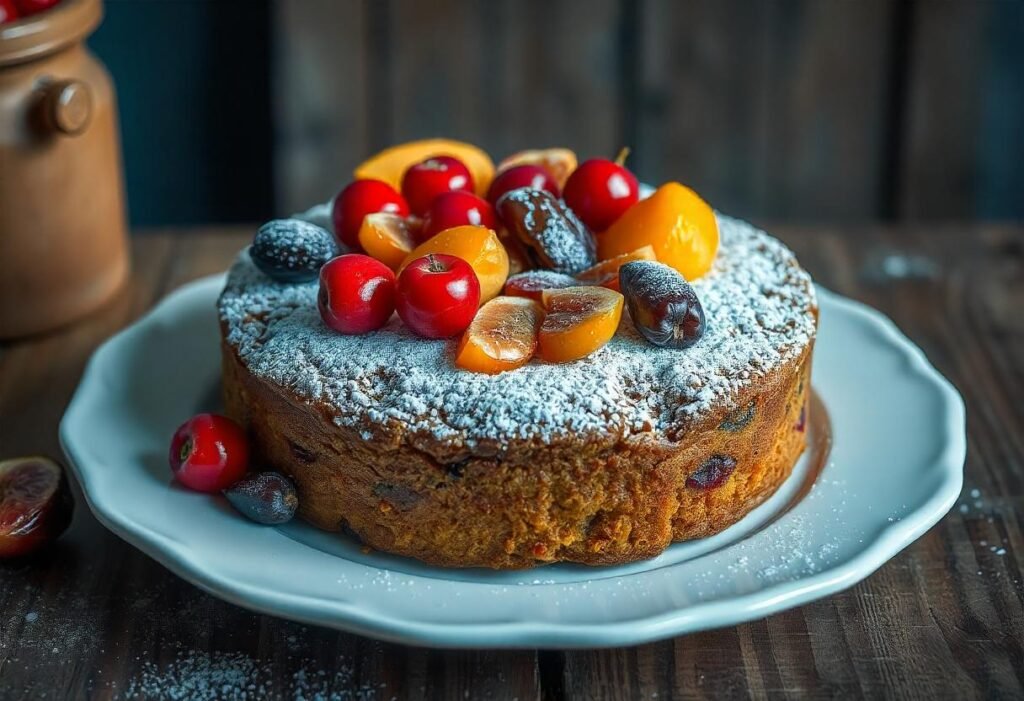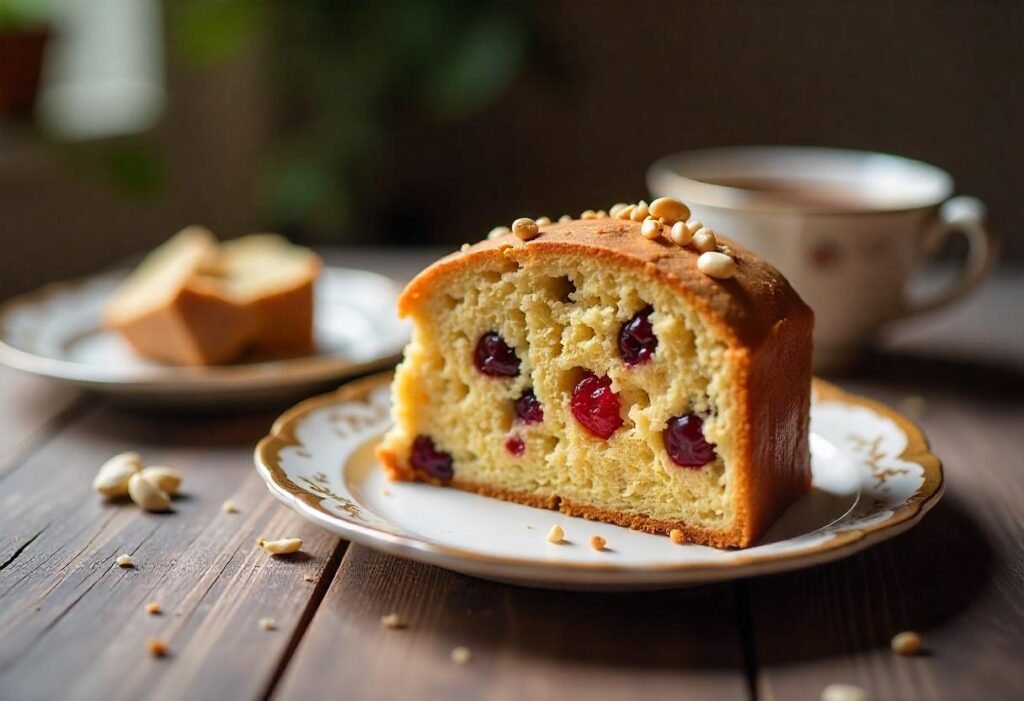Table of Contents
Introduction
Fruit cakes have been in existence since the ancient days when small cakes were baked in honor of the New Year season. Fruit cake goes as far as the Roman Empire where a cake with pomegranate seeds, pine nuts, raisins, and barley mashed was baked and stored for the soldiers’ food supplies.
Years passed on, and the recipe gained modifications and variations and was introduced widely in Europe especially Great Britain where it is associated with celebrations such as Christmas and weddings. Real fruits also came into use by the 16th century concerning sugar from the colonies and dried or candied fruits became a part of the caking process. During the Victorian period, it became the most distinguished product as it was closely connected to luxury and lavishness.

Fruitcakes are considered to be traditional to many cultures and still bring feelings of coziness and tradition in many families, but, unfortunately, most people have an ‘either you love it or hate it’ attitude to it because of its specific characteristic – its density. Though making the perfect fruit cake is a tiresome affair it does help keep this evergreen tradition quite scrumptious and enjoyable, most particularly during the holidays. Let’s learn from the following steps how to avoid the pitfalls of fruitcake baking and how to make your fruitcake baking a more enjoyable one.
Common Mistakes When Making Fruitcake
- Overmixing the Batter: It is essential to note that fruitcake batter should not be mixed with vigor as with other kinds of cakes. Too much mixing can lead to the formation of a skin and this makes it hard and chewy. For that reason, fold the ingredients rather softly and carefully.
- Using Poor Quality Fruits: The preservation of fruits especially dried or candied fruits can either enhance or demoralize the fruitcake. Relatively cheaper fruits may have been processed to include a lot of sugar or preservatives thus making them too sweet or having a fake taste.
- Skipping the Soaking Step: This is because dried fruits require to be moistened to enhance the presence of moisture in the cake. Failing to do this will see the fruit absorbing the moisture in the batter hence making the cake very dry.
- Incorrect Baking Temperature: Fruitcakes, therefore need to be baked low and slow to allow the heat to penetrate evenly and not burn the edges. This means that when the weather is hot the cake bakes on the surface and remains raw on the inside.
- Neglecting Storage: This product has to mature, and fruitcake, indeed, tastes differently when consumed after a few months or even years after the preparation. If a food item is not stored properly it means that it can either become stale or go bad.
The Importance of Quality Ingredients
- Fruits: Select dried fruits that are fresh with good quality such as raisins, currants, apricots, and also figs. Select fruits that do not have too much sugar topping them or the ones that have too many preservatives. Choose those that are not sulfated since they taste a lot better as compared to the usual sulfured ones.
- Nuts: The nuts have crunching qualities and it is better to use fresh nuts in the cake preparation process. Make sure the nuts are fresh do not use nuts that have been stored for long since they usually have a spoilt taste. It is advised to use pecans, walnuts, and almonds, but the type of nut can be selected by the person’s preference.
- Spices: Some of these are cinnamon, nutmeg, and cloves the three that play a very crucial role in the warming flavor felt in this kind of cake. It is better to grind the spices on the same day so that they can add a stronger and better smell to the food.
- Alcohol: Some of the original recipes for fruit cake contain rum, brandy, or whiskey for purposes of soaking the fruits and sometimes for basting the final product. The alcohol used vitalizes the cake and at the same time makes the cake last long by preserving it during the aging stage.
- Butter and Eggs: To make a delicious and very moist cake, it is advisable to use the best butter and eggs in the market. From the butter, it’s the fat content that is beneficial in giving tenderness whereas eggs bring stability.
Check Out: 5 Unique Variations of Mexican Wedding Cake.
Properly Preparing Fruits and Nuts for the Cake
- Soak the Fruits: To tenderize dried or candied fruits for the batter, it is recommended to marinate them in alcohol, for example, rum or brandy, or in fruit juice for not less than 24 hours, or several days. This restores the moisture in the fruit, firms it up, and puts flavor into it. For any person who may not wish to take the alcoholic content, then there is the option of taking an orange juice or an apple juice.
- Chop Evenly: Make sure that the fruits and nuts are chopped to relatively the same size. Big chunks may settle at the base of the cake while tiny, similar pieces may be admixed in the cake.
- Dust with Flour: These are then required to be dipped slightly in flour before being incorporated into the batter, Fruits, and nuts. This trick prevents them from settling at the bottom while baking so that it is evenly distributed throughout
- Toast the Nuts: Tossing the nuts before mixing them into the batter helps soften and release their flavor and also aids in giving some crispness to the cake.
Baking and Storing Tips for the Perfect Texture
- Line the Cake Pan: Grease your cake tin and also use parchment paper to avoid the cake sticking on the base of the cake tin and bake well. Some bakers suggest that one can double-layer the tin as an added layer of protection.
- Low and Slow: Fruitcakes are quite heavy and moist — that is why they are baked at low temperatures, between 275 F and 300 F. This makes the cake be baked evenly to avoid the situation of the cake being under-baked while some parts being over-baked. Fruit cakes may generally take even longer to prepare than normal ones and it may take many hours, even up to ¾ depending on the size of the cake.
- Use a Water Bath: To avoid this it is recommended to put a small pan of water at the bottom of the oven when the cake is cooking. This produces steam which prevents the cake from becoming dry as well as enhances its moisture content which is referred to as the cake’s ‘Dew’ or ‘Humidification’.
- Test for Doneness: Fruit cakes are very tough to check for doneness as it is largely compressed. The cake is also best checked using a skewer or a cake tester inserted into the center of the cake. Primarily, it should be soft, or perhaps slightly damp and slightly crusty on the outside. Do not overbake this cake for this will make the cake dry.
- Aging the Cake: Probably the greatest advantage of fruitcake is the point that it should be aged to make it tastier. After baking, let the cake cool before placing it in cheesecloth that has been soaked in alcohol or fruit juice in case you’d like the non-alcoholic kind. It should be allowed to age for at least a few weeks with the cheesecloth being re-moistened weekly. It serves to intensify the flavor and keep the chocolate cake soft and fleshy.
- Storage: Fruitcakes can remain fresh for months and even more provided that they are stored well. You can also preserve your fruitcake for a long time especially if you made it a very long time ago; it can be frozen for more than one year. But do make sure that it’s well-wrapped and that it is put in an airtight container.
Alternative Options for Dietary Restrictions

- Gluten-Free: Replace traditional wheat flour with gluten-free flour in your recipe prepared from rice, cornstarch, oats, or bean flour. This is because to set the structure of the cake or cupcakes/or other ingredients a binding agent such as xanthan gum may be mandatory.
- Vegan: Replace eggs with ground flaxseed that you blend with water or chia seeds and water and replace butter with margarine. As for the sweetener, you may also prefer to use maple syrup or any other liquid sweetener instead.
- Sugar-Free: Avoid normal sugar from the table and instead you should use natural sugars that include erythritol, stevia, and coconut sugar among others. They contribute sweetness to the dish which means that it will not be necessary to put much sweetness such as sugar.
- Nut-Free: In case of nut allergies then one should remove the nuts from the mixture or use other seeds that are similar to walnuts, such as sunflower or pumpkin seeds.
Conclusion
Fruitcakes that are well-made can add beauty to all occasions and come with history and legacy in a bottle. If you focus on the use of good quality ingredients, correct preparation and the essence of baking the end product should be a delicious, moist fruit cake. Whether you choose to follow this fruitcake recipe as it is or make some changes for special diet considerations, fruitcake is undoubtedly one of the most valuable traditions of baking.
For more info: Click Here.
FAQ’s
How long should I soak the fruits for fruitcake?
It is suggested to soak the fruits for not as much as 24 hours; however, it is conceivable and rather useful to soak the berries for days or even weeks.
Can I make fruitcakes without alcohol?
Indeed, you can replace alcohol with renewed fruit juices such as orange liquid or apple juice where there is a need to infuse the fruits and maintain the dampness of the cake.
How long does fruitcake last?
Fresh fruitcakes can ideally be stored in an air-tight container for several months and even up to a year if they are stored in a freezer. The alcohol also helps in preserving the food to go longer which is perhaps the reason why it is added.


